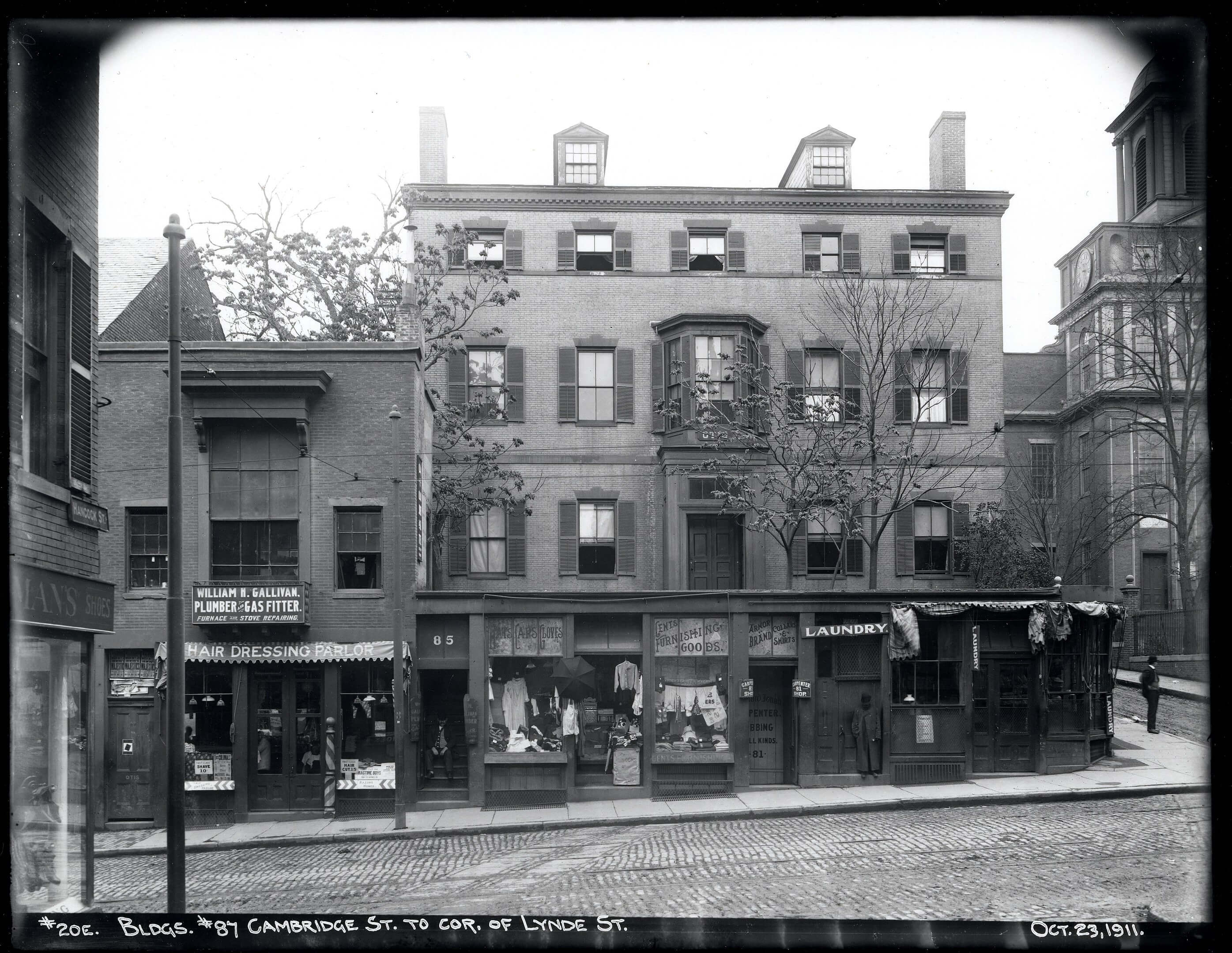Boston-headquartered historic preservation nonprofit Historic New England has announced that architecture and urban design firm NADAAA, also based in Boston, will join the organization in a “comprehensive exploration” of the Otis House, a 226-year-old mansion at Bowdoin Square in the city’s West End.
Located at 141 Cambridge Street, the Federal-style structure was the first completed of three grand residences designed by Charles Bulfinch, architect of the Massachusetts State House, for Bay State politician Harrison Gray Otis, a leader of the Federalist Party. (The two others are both in neighboring Beacon Hill at 85 Mount Vernon Street and 45 Beacon Street.)
Following its use as a private residence for Otis from 1796 through 1801 (and then for paint merchant John Osborn from 1801 until 1822), the stately three-story brick building has lived many lives including as a boarding house and “shampoo bath”-equipped alternative medicine facility for “invalid ladies, and gentlemen with their wives,” per Historic New England’s timeline of the property.
Today, the Otis House, designated a National Historic Landmark in 1970, functions as a historic house-museum and as headquarters for Historic New England, which purchased it back in 1916 when the organization was known as the Society for the Preservation of New England Antiquities. Together with two neighboring 1840 row houses on Lynde Street, the Otis House forms a larger downtown Boston complex for Historic New England, a “unique location that reflects a place that combines history, culture, community, and urban evolution,” the organization said in a news release announcing NADAAA’s involvement.
As for the all-important “what’s next?” at the Otis House, that has not yet been formally established although this next chapter will, per Historic New England, involve a thoroughly considered refresh of the site focused on “enhanced visitor experience and use” and a positioning of the Otis House “as a gateway to all that Historic New England has to offer.” Founded in 1910, Historic New England is the oldest and largest regional historic preservation organization in the country and operates 38 historic sites across multiple states.

“Following the development and adoption of a new strategic plan at Historic New England, we’ve launched a reimagining of the Otis House complex to better advance our mission in the twenty-first century,” elaborated Vin Cipolla, president and CEO of Historic New England President, in a statement. “We’re excited about NADAAA’s understanding of the context and potential of Otis House, how it could become an exciting, fully civic gateway visitor experience for Historic New England, and play a meaningful role in the vitality of the neighborhood.”
Added Nader Tehrani, principal designer of NADAAA and outgoing dean of the Irwin S. Chanin School of Architecture at the Cooper Union in Manhattan:
“Beyond its importance for Boston, Otis House represents something for New England more broadly as it embodies a piece of urban fabric in all its facets: its architecture, interiors, furniture, and artifacts all tell a story that extends the social importance of a dynamic community that is always in a state of transformation. The diversity that is embedded in the site is an important reminder of who we are today, how we interpret our history, and moreover, how we allow this special institution to tell new stories to future generations. We strongly believe that the combination of strategic planning, creative programming, and thoughtful transformations will bring a renewed sense of relevance to this historic jewel.”
The Otis House has survived significant—and highly controversial—change in the West End, a compact neighborhood bounded by Beacon Hill to the south and the North End to the east with the Charles River flanking the neighborhood on the north and west. An early 19th-century hub of African American life in Boston and later home to a diverse number of immigrant communities including Irish immigrants and later Eastern European Jews, the vibrant and close-knit West End was almost entirely decimated by 1950s-era urban renewal projects that displaced thousands of residents. Decades later, in 2015, Brian P. Golden, director of the Boston Planning & Development Agency (BPDA), issued an apology for the wholesale leveling of the old West End. Today, the West End is populated by residential high-rises and office buildings and is anchored by Massachusetts General Hospital, which was spared from destruction, as well as North Station and the TD Garden arena in its northern section.
As noted by Historic New England in its press announcement, several major redevelopment projects are planned in and around the West End, including at Mass General, the West End Branch Library, and the Paul Rudolph-designed Charles F. Hurley Building. These projects, per the organization, “present opportunities for advocacy and serve as catalysts for public conversations about the future role of the Otis House complex as well as the relationship between the West End’s built environment and community heritage and vitality.”
AN will provide further updates as Historic New England and NADAAA reveal plans for the Otis House complex.











